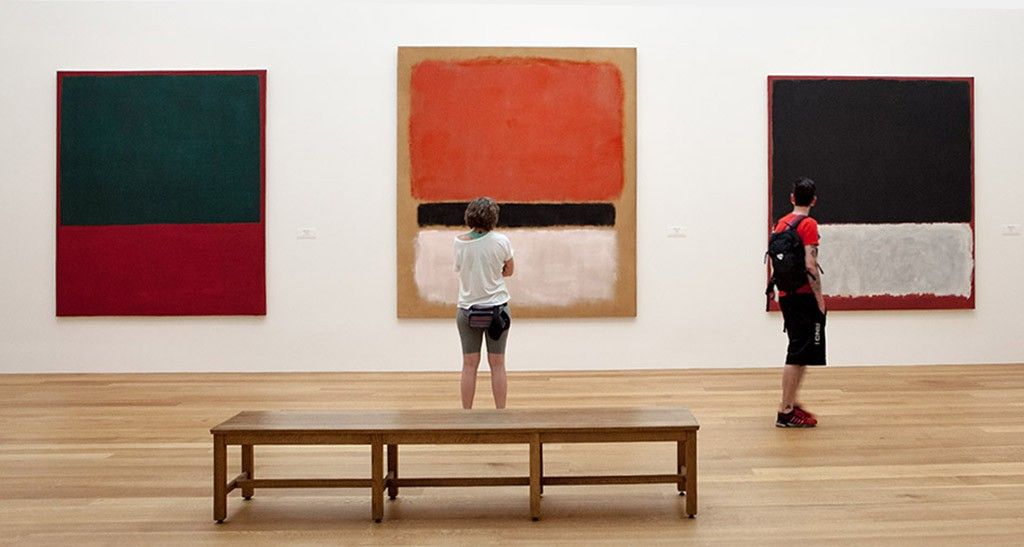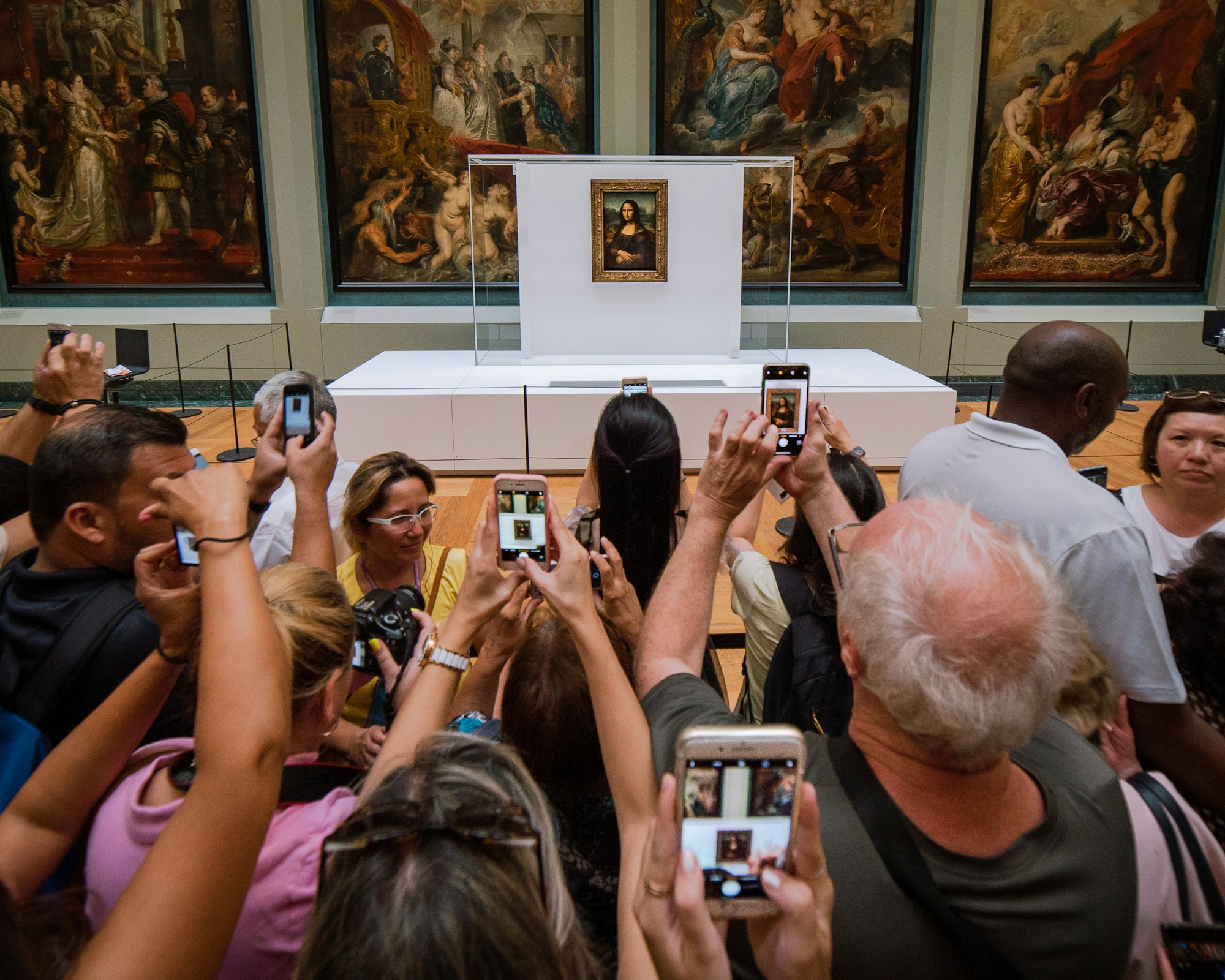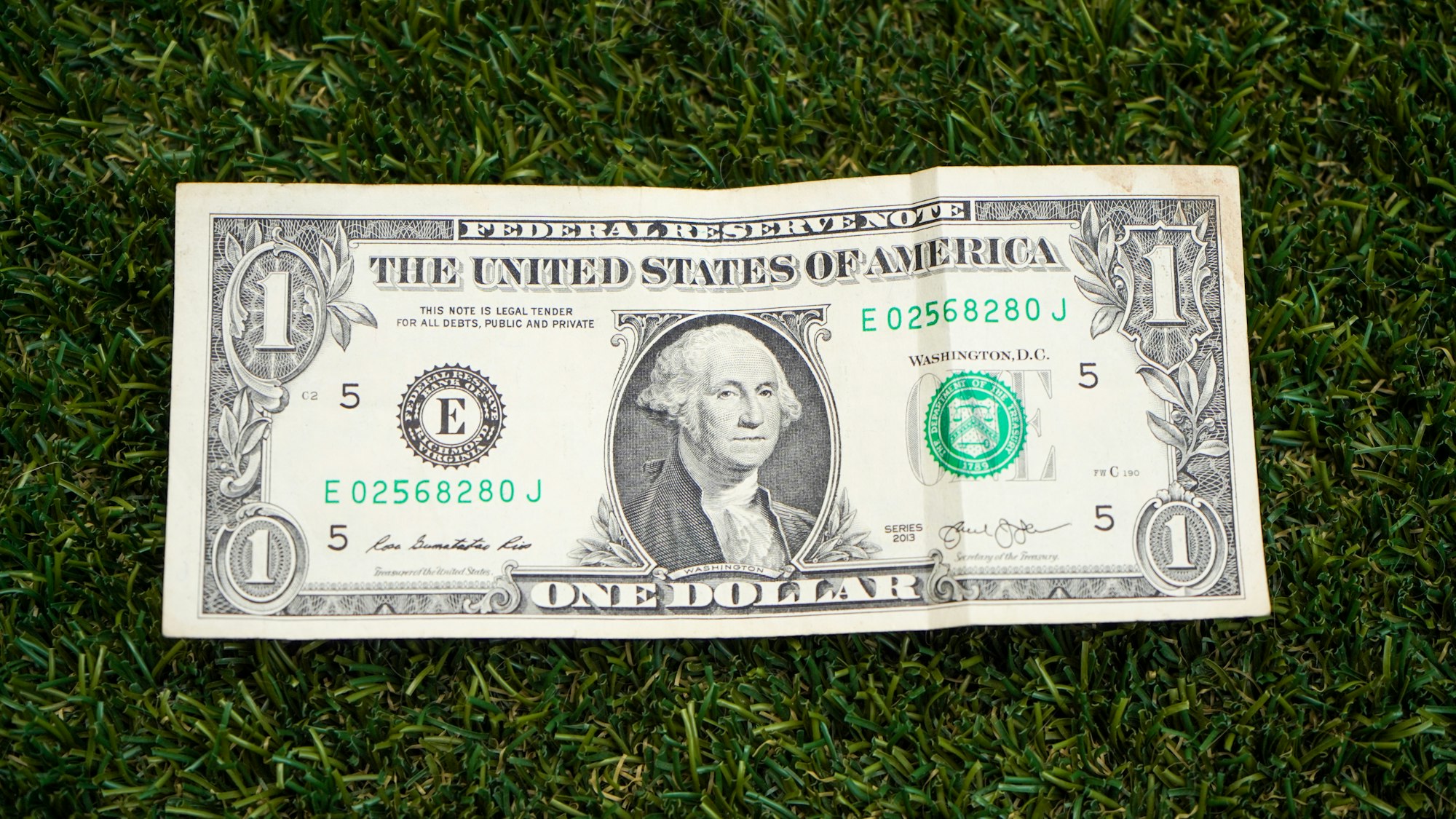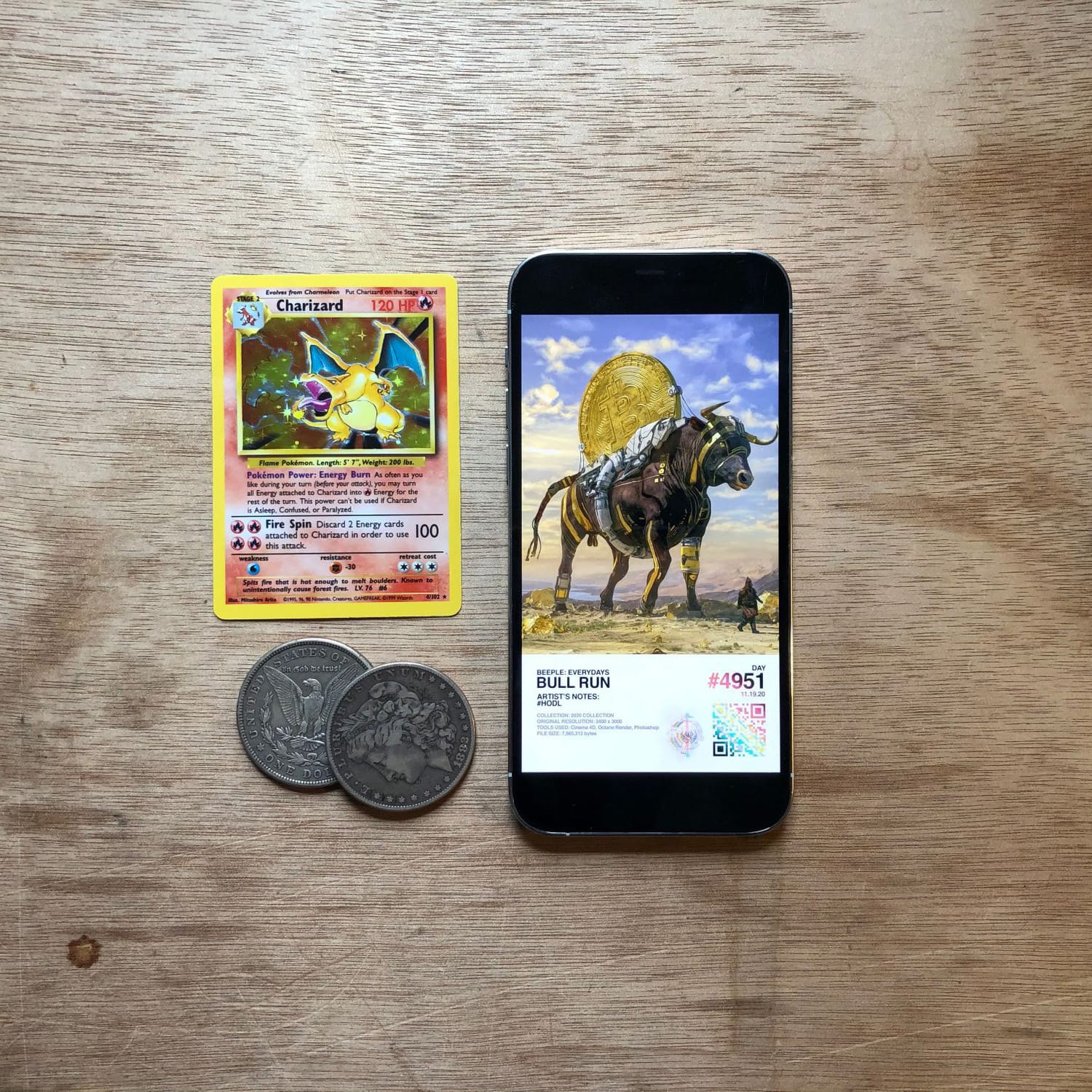How many times do you think someone looked at a Mark Rothko painting and thought, "I could've done that"?
"You didn't do it, though," goes the classic retort. And it's true, of course. Only Mark Rothko, who actually put paint to canvas to make those big, bold shapes, has his art hanging in a gallery, worth millions of dollars.

But still... that doesn't exactly explain why some art is so expensive. Alex Mayyasi pondered this question in an aptly titled 2015 article for Priceonomics, "Why is art so expensive?" From the article:
When we say artwork has value, really we value the social meaning we ascribe to it: transient characteristics like its current meaning within the artistic canon, contemporary attitudes about art, and the favorability built up over time by its ubiquity.
You could say the market for art is “rigged”; a more charitable explanation is that galleries and dealers act as tastemakers, deciding which art is good and therefore expensive. The end result is to turn artists into brands, which introduces enough certainty for the market to function.
In other words, art is valuable because of its story, not because of its form or content or medium. For better or worse, the most famous art is famous because the auction houses and galleries agreed that those paintings, styles, or artists told the best stories — at least to their judgement.
If art is all about telling stories, then the best artists are brands — living stories taking place in real-time.
In the information age, brands are everywhere. The internet has turned everyone and everything into a brand. People brand themselves as icons, larger than life versions of themselves that are more character than actual person. Businesses brand themselves with entire personalities and crack jokes on our social media feeds. Brands have thrived on the internet.
So it stands to reason that the internet should be great for art... which is not the case. A new technology called non-fungible tokens, or NFTs, is already changing that. Before we talk about NFTs and what the word "fungible" means — and why it's creating a New Economy — let's set the stage.
The Old Economy of Fine Art
The art world hasn't exactly been open to innovation. The art world hasn't really been open to anyone or anything! It's exclusive to a fault, intentionally designed to benefit the people who are already members of the club while keeping everyone else out. From that Priceonomics article:
When Daniel Radcliffe—who has established himself as a contemporary art collector with the riches he earned from the Harry Potter films—attended the Frieze Art Fair, he set his sights on a work by conceptual artist Jim Hodges. The wealthy actor was good for the money, but he discovered that an ability to pay does not easily translate to the ability to buy art. The dealer told Radcliffe that he was “waiting for a more prestigious collector” to buy the work. Radcliffe only managed to buy the painting after the artist personally lobbied the dealer.
The actor who played Harry Potter wasn't considered prestigious enough to buy a painting. Clearly it wasn't about the money. The Old Economy of fine art is deeply entrenched in its ways.
But look what's happened to television, movies, music, newspapers; all of these were once exclusive clubs too. The Old Economies were disrupted as new innovations overcame the old benefits. New Economies formed based on digital affordances instead of analog ones, providing better experiences and more opportunities to create wealth than the Old Economy ever could.
From that perspective, it stands to reason that the internet would have disrupted the traditional art world, just like it did to Hollywood, newspapers, and music. Why didn't it?
The internet might be good at telling stories and building brands, but it's inherently opposed to the two other cornerstones that really make fine art valuable: scarcity and authenticity.
The Trouble of Digital Scarcity
One of the main strengths of the internet is that it makes scarcity a moot point. Copying, remixing, and sharing the digital artifacts we find on the internet is so easy that it's literally become our main method for expressing humor. Memes fulfill a deep hunter-gatherer instinct in us, a fun and rewarding discovery of new information and perspectives.
But here's the thing. A meme on one screen is nothing special. It's not until that meme hits a million screens that it becomes a viral movement and spreads an idea around the world. Memes matter because of their story, but that story only spreads because memes cost nothing to share. Memes only work because of their absolute lack of scarcity.
Similarly, the infinite scale offered by the internet is how new media empires like Huffington Post, Gawker, BuzzFeed, VICE, Vox, and the New York Times were built. The internet is the new printing press, the newsstand, and newspaper, all combined into one.
This has worked out better for some businesses than it has for others. Remember Napster? Getting free music might be nice as a consumer, but just ask Metallica — it sucks for artists.
The Internet's Issue with Authenticity
Another key strength of the internet is the democratization of publishing. Anyone can start a website, launch a YouTube channel, or tweet out their opinions. But like the internet’s effect on scarcity, this too is a sword which cuts both ways — the anonymity, decentralized nature, and lack of consistent attribution means that when it comes to authenticating for digital content, anyone's word is as good as anyone else's.
Because sharing things on the internet is so easy, attribution is often an afterthought, if it's ever even thought about at all. In 2015, internet personality Josh Ostrovsky (who is better known as @thefatjewish) was accused of ripping off jokes without providing credit to their original creators. It turns out that jokes he had been posting on his Instagram feed — and leveraging to build a business, brand, and fame — weren't all authentically his.
"It was never my intention for anyone to think all of this was mine. That’s not the nature of the internet," Ostrovsky told Vulture magazine, promising that he would go back and either add attribution to old posts or take them down if he couldn't find a source. But going back and updating all the old posts isn't the nature of the internet, either. It doesn't actually matter if anyone believed that Ostrovsky was coming up with all of those jokes — he had already reaped the majority of the rewards from those posts by being the one to post them. In order for attribution to work online, it has to be baked in from the beginning.
Art's Answer to Authentication and Scarcity
In the art world, scarcity is pretty straightforward: there are only so many paintings by Monet. Even Warhol, who was known for his prints, only made so many; a print made by Andy Warhol himself holds far more value than one printed out from the internet. Scarcity means rarity, and everyone knows that very rare things are in high demand — that's what makes them valuable.
Of course, the art world figured out out a solution for authenticity a long time ago — because if a painting is authenticated as an original work by a master, it can be worth tens or even hundreds of millions of dollars. The authentication process for fine art is a game of high stakes and highly intensive research that starts with the catalogue raissoné.
The culmination of the research of scholars and collectors who study famous artists is a book called the catalogue raissoné: a "critical catalog" of all of the known works made by an artist. It's always referred to in French, because the fine art world is bougie like that.
Catalogues raissonés contain highly researched information detailing all of an artist's known works, kind of like an officially sanctioned biography of all the art made by that artist. Here's the information that's included in the catalogues raissonés for Claude Monet:
- technical data (title, size, date, medium, where a signature should be located)
- a list of exhibitions (where the painting has been displayed)
- references (a bibiliography of books or articles)
- provenance (the history of a piece's ownership)
- commentary (notes or thoughts from the author or publisher)
The catalogue raissoné is basically a centralized ledger that keeps track of each of an artist's works. When auction houses or collectors want to verify a painting's validity, their starting point is to check that artist's catalogue raissoné for that painting to make sure it's authentic.
The supreme arbiter of the genuine and fake: the catalogue raisonné
Wait a second. A ledger... containing a list of technical data... which people use to prevent fraud, prove legitimacy, and define something with a purely abstract value...
That sounds like Bitcoin.
A New Economy for Digital Art
Like it or not, Bitcoin has turned people around the world into millionaires and billionaires, and it's created a new, rapidly growing, decentralized economy for speculation and investing. The underlying blockchain tech that powers bitcoin is here to stay, and it has potential far beyond currency, even though there still hasn't really been a truly practical use-case for any of the blockchain stuff just yet.
This is because cryptocurrencies like Bitcoin regularly take as long as ten minutes to run a single transaction — tragically slow compared to credit card networks like Visa and Mastercard, which handle thousands of transactions every second. Until there are some major changes to how that works, it's hard to imagine buying coffee with crypto any time soon.
But a new kind of blockchain tech is making waves by leveraging the strengths of cryptocurrency in a different direction.
They're called NFTs, and they're creating a New Economy for digital art.
Non-fungible tokens
NFT stands for non-fungible token, a kind of cryptocurrency that’s not designed for spending, but instead focused on collecting.
After all, the most popular thing people do with their crypto isn't actually spend it; it's not spend it.
Seriously, though: as of the beginning of 2021, Bitcoin and most other mainstream cryptocurrencies are looked at more as an investment like gold or silver than as an actual currency. People are buying and holding cryptocurrency for the value that it represents, not what it actually does.
That sounds like what people do with art. From the "Why is art expensive?" Priceonomics article quoted earlier, emphasis mine:
“The idea that art is an asset class and that certain objects by certain artists retain their value,” says Jonathan Binstock, who has a doctorate in art history and helps clients assemble art collections as part of Citi Private Bank’s Art Advisory service, “is something people around the world have come to agree upon.” As William Fleischer, owner of Bernard Fleischer & Sons, another art insurance company, points out to us, it’s really no different than the high prices people pay for collectibles ranging from comic books to antique toothpick holders.
This is why people are so excited about NFTs. NFTs are cryptocurrency combined with a catalogue raissoné. They create artificial scarcity and automatic authentication by using the same blockchain tech that makes cryptocurrency valuable.
Non-fungible tokens solve the internet's problems with scarcity and authenticity.
But what the hell does non-fungible mean?
A good example of something that's non-fungible is the Mona Lisa.
We've all seen a picture of the Mona Lisa, but seeing it in person is entirely different. I haven't been personally, but from what I've heard from family members who have, it's actually a pretty, uh, unique experience.

Some of the most beautiful artwork in the world surrounds the Mona Lisa, and yet, a crowd clamors for a glance at the tiniest painting in the room, tightly squeezed together. Everyone has their camera out, peering from behind a lens or screen at her delicate smile.
The Mona Lisa is the Mona Lisa because she's an original, one-of-a-kind masterpiece painted by Leonardo da Vinci, full of the rich history of how he used his own smile, a deep reservoir of patience, and knowledge of human anatomy to create what truly is a striking portrait.
Add in a daring heist story (the Mona Lisa was briefly stolen in 1911) and you have an incredibly compelling narrative fit for the world’s most famous painting. People line up to see her in person because she is the real Mona Lisa; seeing a copy, even if it were perfectly replicated, just isn't the same.
The Mona Lisa is perfectly non-fungible.

On the other hand, an example of something that is perfectly fungible would be a regular dollar bill.
A $1 bill in my wallet and one in yours are exactly the same, because things that are fungible are perfectly interchangeable; they can be traded without any impact on their value. A regular dollar bill doesn't have any meaning or story behind it — it's always worth exactly $1. Even if you get change for that dollar as four quarters, there's no difference in value. You still have one dollar.

But sometimes fungible goods can become non-fungible: if you gave a dollar bill to Andy Warhol and he signed it, then gave it back to you, it wouldn't be fungible anymore. Because of Warhol's signature, that dollar bill has become unique — or to sound like an economist, it's become non-fungible.
NFTs are like cryptocurrency, digitally signed by an artist
When an artist mints a non-fungible token, it's like that artist is digitally signing a limited number of tokens, permanently connected to a piece of digital artwork.
This is different from most other kinds of cryptocurrency. The Bitcoin, Litecoin, Ethereum, or Dogecoin that you buy on a crypto exchange are all fungible tokens, just like how a dollar bill is a fungible bill. If I have one Dogecoin and you have one Dogecoin, we each have a token representing the same amount of money, just like if we each have a $1 bill.
Since NFTs are either one-of-one or numbered, they're all totally unique. Even if an artist mints 5,000 NFTs in a set, there's still only one token that represents #4,653 out of 5,000. Each NFT is inherently one of a kind, just like there’s only one Mona Lisa, so whatever happens to that token can contribute to its story. Since the blockchain acts as an automatic catalogue raissoné for each token, ownership, proof, provenance, and resales for anything minted as an NFT is perfectly recorded.
What's good?
Provenance is one of the more interesting qualities of a catalogue raissoné: it's the history of who owned an art piece. Naturally, this can make a pretty significant impact on the value of a work of art. Consider the story of the Rockefeller Rothko, a famous painting by the same Mark Rothko I mentioned at the beginning of this column. It had been displayed in the famous 30 Rockefeller Plaza in Manhattan for decades, when Mr. David Rockefeller decided to put the piece up at auction.
Prior to the auction Sotheby's estimated the painting would sell for $40 million, but because of the provenance of the painting — Rockefeller was a titan of the American media industry, and the building affectionately known as 30 Rock is one of the most recognizable skyscrapers in all of the world — the painting sold for $72 million, almost double the original estimate. How soon until a random NFT becomes worth hundreds of thousands of dollars because Elon Musk, Joe Rogan, or another notable figure owned it first?
NFTs handle provenance even better than the catalogue raissoné of the traditional art world. This is even better than the traditional fine art world's solution, since NFTs have a perfect record of their provenance and guarantee authenticity in a way that even the most-esteemed art guarantors could never. Many NFT auctions even have royalties for artists baked in to their tokens, which for the first time lets artist actually get a royalty cut if their art gets resold for a higher price in the future. Now artwork created and sold in the past that comes back into style can create a massive windfall for the artist too, not just the collector.
What's next?
Remember when that Banksy print shredded itself after being sold at auction back in 2018? It was a moment.
Imagine if an artist minted an NFT that — after a certain number of resales or upon bidding for a certain price — did something wild like that.
Surprise self-destruction is one thing, but surprise evolution is another thing entirely. Perhaps that's why the half-shredded piece was rumored to have become worth even more after the incident.
For example: what if a token duplicated itself into several more copies after it had been resold a certain number of times, turning the original tokens into a first-edition collectible? What if a piece of artwork changed colors if it became worth a certain price?
Since non-fungible tokens can represent anything, really, they stand to have an impact on far more than just the fine art world: it's really about anything and everything that can be collected.
The potential is huge, but so are the ramifications. Time will tell if crypto and NFTs are the next major innovation for art.
